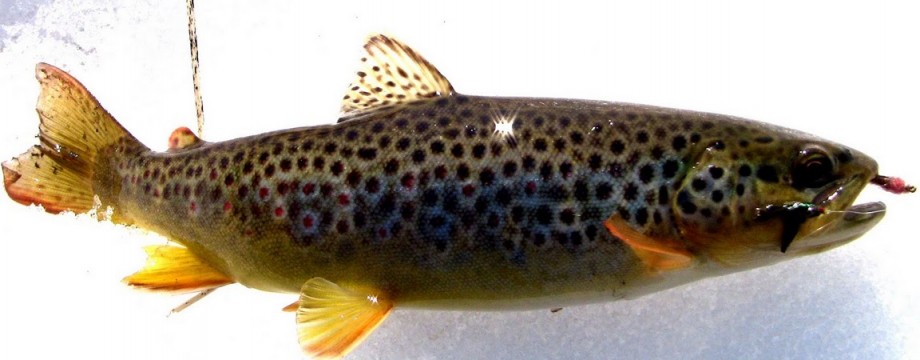The southern Wisconsin tributaries are currently BLOWN OUT! Not to worry, this warm weather and rain is much needed to melt whatever remaining ice there is and bring the water level up so that the fish feel comfortable moving upstream. Steelhead spend most of their adult lives in the ocean, or in my case Lake Michigan in water sometimes over 100 ft deep where there is little light. That makes these fish even more sensitive to light than other fish. So when they migrate from the “big water” to the rivers they wait for the water to rise allowing them to feel less threatened from predators. For now the rivers are flooded, but fish are moving upstream! and when the water level recedes the fishing should be hot!
Spring has Sprung!
Game On!
With temperatures now starting to average above freezing it’s time to get all my gear in order and make time to wet a line. Great lakes tributaries should start producing some bites when the conditions allow. Egg and nymph patterns seem to be the most consistent during the spring run, but that doesn’t stop those extra aggressive fish from slamming a well presented leech or wet fly occasionally. WADE WITH CAUTION! Getting swept off your feet in these cold conditions could lead to hypothermia in minutes. Also, the early season for inland trout opens this weekend in Wisconsin. I will be heading up to the driftless area on Saturday to get my fix of small stream trout fishing and will be sharing my results early next week. A fellow angler will be trying his luck on the Milwaukee River for steelhead and I should have a report on the conditions there as well. Winter is tapering off, so get out there while the fishing pressure is at a minimum.
Great Tips for Switch Rods
Getting Ready for a Spring Speycation!
Temperatures in the midwest are slowly on the rise, along with the water levels on the Great Lakes tributaries. From ice-out to about mid May steelhead will be entering the rivers to spawn. While learning about steelhead and how to fish for them, spey fishing came up quite often. Being the first in my mediate family to do any sort of fly fishing, spey fishing was a very foreign thing to me. After watching videos of people waving around these huge fly rods creating designs with the fly line, and then launching it long distances, without any back cast, I became very interested. Traditional spey rods are 12-15 feet long, but in the last couple years 10-11 foot switch rods have become popular for anglers who wanted to swing wet flies and indicator fish with one rod. Also, the rods are great for casting in tight spots on smaller water where a 14 foot spey rod can be a bit much. Because most of the Great lakes tributaries are smaller in comparison to western rivers, the switch rods have become the great lakes steelhead anlgers weapon of choice. Over the winter I picked up one of these switch rods, and when shopping around for line, things got a lot more confusing. The variety of lines and combinations of running lines, shooting heads, and sink tips almost seemed infinite. And although these rods are good for both swinging wet flies and indicator fishing, I found that there really isn’t one line for both jobs. The spey lines tend to have long, thick bellies that make mending difficult, therefore it’s hard to get a dead drift. Because I have another 8 weight reel with WF floating line on it that I could use for the indicator rig, I decided to get a line designed for the downstream swing approach. After chatting with a few experienced anglers who have played with these switch rods I came to the conclusion that I wanted a skagit style line. Designed on the Skagit river in Washington, these lines are made with shorter heavier heads to turn over heavy flies and sink tips without the big D loop that traditional spey lines require to get power. With skagit lines the power comes from the water tension. When you pull the line off the water the resistance loads the rod and gives you the power for the cast, which eliminates that D loop that you may not have room for on a small river. A huge help for anyone interested in this style of fishing is the DVD Skagit Master, featuring Ed Ward, his nicknames are enough for me to listen to what this guy has to say (Obi Wan, Skagit Guru, Zen Master). He breaks down how this style of casting came about, the fundamentals, and the applications it has on the water. There is still a lot I have to learn about this stuff, but I am anxious to get started. So, I got my switch rod set up and I’m waiting on the weather to thaw out the rivers completely and bring in some STEEL!



